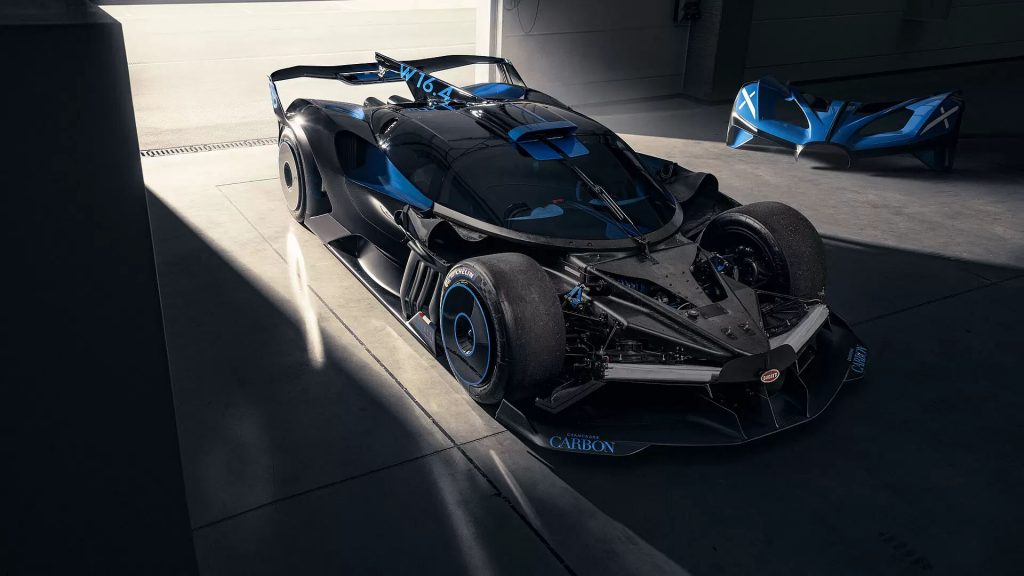Luxury automobile manufacturer Bugatti has announced the use of additive manufacturing in its new concept hyper-car, the Bugatti Bolide.
The details of the vehicle’s design were outlined in a doctoral thesis led by Henrik Hoppe, a PhD student in the company’s New Technologies department. Back in 2017, Hoppe wrote his master’s thesis on a calculation methodology for a 3D printed brake caliper for the Bugatti Chiron, one that resulted in 43% weight savings when compared to the original production component.
Since then, the industrial engineer has developed a new system intended to identify the commercial and technological feasibility of metal 3D printing in Bugatti’s latest performance vehicle. Originally debuted back in October 2020, the concept Bolide features an 8.0 liter W16 engine, weighs just 1240kg, and packs a top speed of over 500km/h.

Inspired by bone
When designing the Bolide, Hoppe planned every step of the vehicle’s construction and carried out all of the necessary calculations to ensure it was indeed feasible. The 3D printed components of the vehicle were inspired by the structure of bone, in that they mostly feature thin walls (some thinner than 0.4mm), hollow interiors, and fine branching. The bionic design choices reportedly result in excellent rigidities while significantly reducing the weight of the parts.
Hoppe adds, “Through the process known as selective laser melting, new, hollow, ultra complex components that are stiffened from the inside can be produced which are very lightweight and yet extremely rigid and strong. We will continue to reduce the weight of our cars while increasing their innovative features in every conceivable area.”

A 3D printed pushrod weighing just 100g
Of the 3D printed components in the Bolide, a pushrod weighing just 100g stands out. The pressure-loaded titanium coupling rod is housed in the chassis area. Despite its weight, the rod is capable of transferring forces of up to 3.5 tonnes depending on the manoeuvre, owing to its hollow structure which features internal supporting arches.
The pushrod is also the first ever instance of Bugatti varying the wall thickness of a thin-walled hollow rod across its length. The part thickens towards the center then thins out again towards the extremities, meaning it is optimized for both localized stress and weight simultaneously. The company has even registered a patent application for the structure.
Optimized weight to strength ratios
Other examples of 3D printed components with incredible weight to strength ratios include a titanium mounting bracket for the front wing of the Bolide. Although it weighs just 600g, the mounting bracket can withstand an aerodynamic downforce of up to 800kg, with a hollow interior and wall thickness of 0.7mm.
Looking at the vehicle’s tailpipe trim cover, a 3D printed hybrid component comprising titanium and ceramic, Bugatti managed to reduce its weight by around 50% when compared to the already-optimized series production model. Now weighing less than 750g, the part has a wall thickness of 0.5mm.
The ceramic elements of the trim cover were built into the titanium housing for their excellent insulation properties. Bugatti made the design choice to protect the carbon outer skin from high exhaust gas temperatures. The thermal shielding functionality is also aided by a built-in venturi nozzle that creates a coat of cool air around the hot exhaust gas. The component as a whole was innovative enough that it has also had a patent application submitted for it.

Of the major automotive manufacturers, Bugatti has certainly had its fair share of additive manufacturing production. In addition to the Chiron’s brake calipers, Bugatti has previously partnered with Scalmalloy producer APWORKS to 3D print a titanium exhaust tailpipe for the Chiron Pur Sport. Partnering with 3D printer OEM SLM Solutions, Bugatti has also previously 3D printed a spoiler, motor brackets, cylinder head covers, fin tail lights, and even a front axle differential.
Subscribe to the 3D Printing Industry newsletter for the latest news in additive manufacturing. You can also stay connected by following us on Twitter and liking us on Facebook.
Looking for a career in additive manufacturing? Visit 3D Printing Jobs for a selection of roles in the industry.
Featured image shows the rear of the Bugatti Bolide. Image via Bugatti.



